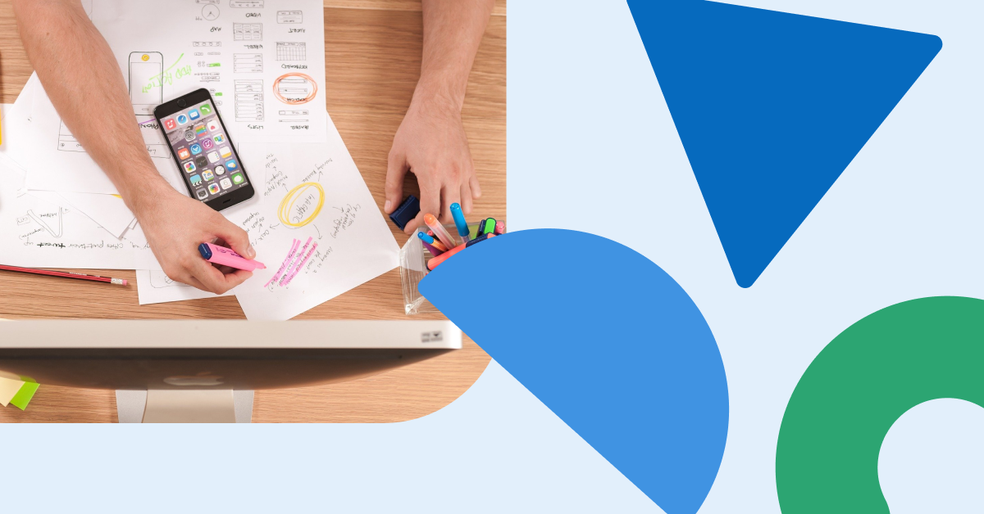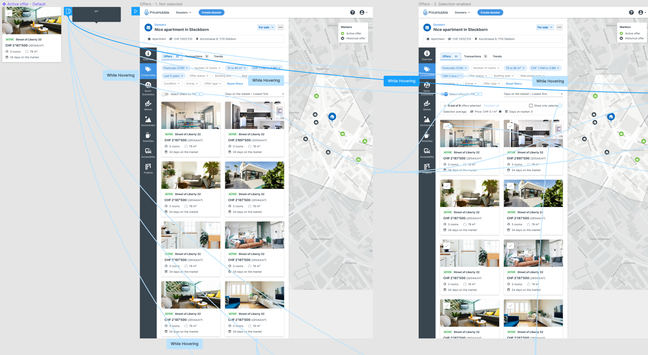Gone are the days when we had to learn how to use technology by reading books or manuals. Luckily now we build digital tools around the skills, goals, and needs of our users. In User Experience, we call this process User Centered Design.
So how do we design in a User Centered way? Believe it or not, great user experiences don't come out amazing with the first try, but rather follow an iterative process incorporating user feedback at each step. We could split the process roughly into two phases:
Phase 1: Through various research techniques, designers get a deep understanding of:
- who the users are
- their goals
- the context in which the experience happens
At PriceHubble we do that by inviting users to user feedback sessions in the form of guided conversations. Through these conversations, we try to get a deep understanding of the way our current/prospect users work, the steps they take to achieve their tasks, the limitations they face, and so on.
Ideally, we also ask users to show us how they work. We observe the steps they take, and identify the issues they encounter and whether they have any creative workarounds for them (e.g. they take screenshots of certain information and then paste it somewhere else). These details later become a crucial part of the solution design.
Phase 2: Designers use the gained understanding from Phase 1 to ideate a solution. They then invite users to test the solution to see how usable it is. Several iterations of this phase might happen until a desirable result is reached.
In these types of sessions organized at PriceHubble, we present our users with an interactive prototype of either new features or new products. During the sessions, we ask users to perform certain tasks using the prototype so we can understand if the solution meets their needs, skill level, and whether it is usable enough.
When evaluating usability, we always take into consideration the following 4 dimensions:
- Learnability - whether a user can easily accomplish a task on the first use of a solution, without having to relearn how the interaction works.
- Efficiency - whether a user can accomplish the task quickly/in due time
- Error prevention - does the solution prevent errors? And in case of errors, can the user understand how to proceed?
- Satisfaction - is the solution pleasant to use?
Regardless of the goal of user feedback sessions, we always give space to participants to speak about other issues they might be facing when using our product, which then feeds into our product roadmap.
As you can see, user feedback is key and center to our design process.
The end goal is to deliver a highly usable, enjoyable product that is effective and efficient in helping users achieve their goals.













